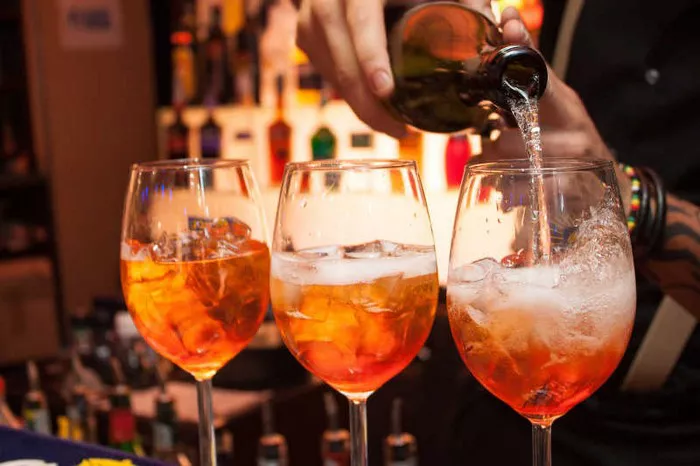When it comes to comparing alcoholic beverages, the question of strength often arises. Mojitos and soju are both popular choices among drinkers, each with its own distinct characteristics and cultural significance. But how do they stack up in terms of potency? Let’s delve into the nuances of these beverages to determine whether a mojito is indeed stronger than soju.
Understanding Mojitos and Soju
To begin our comparison, it’s essential to understand what exactly Mojitos and Soju are. Mojito, a classic Cuban cocktail, typically consists of five key ingredients: white rum, sugar, lime juice, soda water, and mint. Its refreshing taste and combination of sweet and tangy flavors have made it a favorite choice for many cocktail enthusiasts around the world.
On the other hand, Soju is a traditional Korean distilled spirit made from grains like rice, wheat, or barley. It has a clear appearance and a relatively neutral taste compared to other spirits. Soju is often consumed neat or mixed with other beverages and plays a significant role in Korean drinking culture, being enjoyed during social gatherings and meals.
Alcohol Content: Mojito vs. Soju
One of the primary factors in determining the strength of an alcoholic beverage is its alcohol by volume (ABV) percentage. Mojitos typically contain around 10-20% ABV, depending on factors such as the amount of rum used and the proportions of other ingredients. Soju, on the other hand, has a higher ABV, usually ranging from 16% to 25% or even higher for some brands.
So, based solely on alcohol content, it’s clear that Soju has a higher potency compared to Mojitos. However, it’s essential to consider other factors that may influence how the alcohol affects the body.
Serving Size and Consumption Patterns
Another aspect to consider is the typical serving size and consumption patterns associated with Mojitos and Soju. Mojitos are often served in glasses ranging from 8 to 12 ounces, depending on personal preference and the establishment serving them. On the other hand, Soju is commonly sold in small bottles, usually around 350ml to 375ml, although larger bottles are also available.
In terms of consumption, Mojitos are typically sipped slowly, especially in social settings where they are enjoyed over conversation. Soju, on the other hand, is often consumed in shots or mixed with other beverages, leading to quicker consumption and potentially higher intake of alcohol in a shorter amount of time.
While Mojitos may have a lower ABV than Soju, the larger serving size and slower consumption rate may lead to a more gradual and controlled intake of alcohol, whereas the smaller serving size and quicker consumption of Soju shots could result in a more rapid and intense effect.
See Also: what is a sidecar
Mixers and Dilution
The presence of mixers and dilution also plays a role in the overall strength and perceived potency of Mojitos and Soju. Mojitos are typically mixed with soda water, which not only adds volume but also dilutes the alcohol content of the cocktail. Additionally, the use of lime juice and mint can further mask the taste of alcohol, making Mojitos seem less potent than they actually are.
Soju, on the other hand, is often consumed neat or mixed with plain water or other non-alcoholic beverages. While this may dilute the alcohol to some extent, it’s generally less effective at masking the taste of alcohol compared to the mixers used in Mojitos. As a result, even though Soju has a higher ABV, its flavor profile may make it seem stronger to some drinkers.
Individual Tolerance and Sensitivity
It’s important to recognize that individual tolerance and sensitivity to alcohol can vary widely among people. Factors such as body weight, metabolism, tolerance level, and overall health can all influence how alcohol affects an individual. Someone who is more sensitive to alcohol may feel the effects of a Mojito more strongly than someone with a higher tolerance, regardless of the beverage’s ABV.
Similarly, cultural and social factors can also play a role in how alcohol is consumed and perceived. In Korean culture, for example, Soju is often consumed as part of communal drinking games and rituals, which may influence the pace and amount of consumption. In contrast, Mojitos are often associated with leisurely socializing and may be consumed at a slower pace.
Conclusion
In conclusion, while Mojitos and Soju differ in terms of alcohol content, serving size, consumption patterns, mixers, and individual sensitivity, it’s challenging to definitively say whether one is stronger than the other. Soju typically has a higher ABV than Mojitos, but factors such as serving size, dilution, and individual tolerance can influence how each beverage is perceived in terms of potency.
Ultimately, the answer to the question “Is a Mojito stronger than Soju?” may vary depending on various factors and individual experiences. Both beverages should be consumed responsibly, and drinkers should be mindful of their own limits and how alcohol affects them personally. Whether enjoying a refreshing Mojito or sharing a bottle of Soju with friends, moderation is key to a safe and enjoyable drinking experience.


